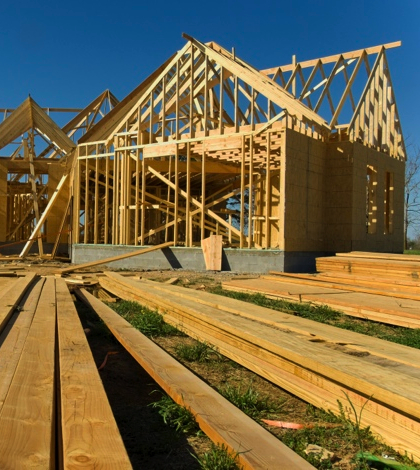Rancho San Gorgonio, which will take 20 to 30 years to complete, will cover nine acres, add about 9,000 people to Banning’s population and generate an estimated $90 million in developer fees. That’s a major project, but the Inland Empire needs a lot more like it to keep up with the demand for new housing.
After years of virtually no residential construction, Banning is getting serious about building single-family homes.
Last month, the city council approved Rancho San Gorgonio, a 3,385-unit master planned community that developer Diversified Pacific in Rancho Cucamonga plans to build in the southern part of the city.
At buildout, which is expected to take 30 to 40 years, Rancho San Gorgonio would cover 831 acres: 670 in the city, the remaining 161 in unincorporated Riverside County.
The county property will have to be annexed before construction can begin there. That process must be approved by the Riverside County’s Local Agency Formation Commission, which establishes all borders and spheres of influence within the county, according to Brian Guillot, Banning’s community development director.
Amenities will include public parks, open space, walking and riding trails, a community center, space for retail and other commercial development and a site for an elementary school.
Ultimately, Rancho San Gorgonio will add about 9,000 people to the city’s population and generate up to $90 million in developer fees. That revenue would be used to pay for public services and improvements, including $10 million for transportation upgrades.
“We expect this to have a major impact on the local economy,” Guillot said. “The $90 million in fees alone will be a major contribution.”
The project will be built less than a mile south of Interstate 10. It will be bordered by Westward Avenue on the north, Sunset Avenue and Turtle Dove Lane on the west, San Gorgonio Avenue on the east and Coyote Trail and Old Idyllwild Road on the south, according to a staff report.
No construction date has been set, but work is not expected to begin for at least one year, Giuillot said.
Rancho San Gorgonio, which will be built on what is now mostly open space, is the second major residential development approved by Banning in the last four years: in 2012, the city council approved a 4,800-unit project that will be built by Pardee Homes in Pasadena.
Both projects will reverse a major trend: for years, housing developers have neglected Banning in favor of other cities in Riverside County’s Pass area, especially Beaumont, Banning’s neighbor to the north.
During the past 10 years, Banning has issued only six construction permits for single-family homes. That doesn’t count the Pardee project, which is approved but has yet to start construction.
Even in the slowest housing market ever, a city like Banning, with a population of approximately 30,500 as of three years ago, would be expected to build more houses than that.
“Housing is a major issue for us, like it is for a lot of cities in California,” Guillot said. “In the last 10 years we haven’t built many houses, but there’s more to it than just houses. If you don’t get houses, you don’t get retail. People are always asking why we don’t have the amenities that other cities have. That’s the reason why.”
The lack of new houses isn’t confined to Banning, or the Inland Empire. It’s a statewide problem that’s been building for years, according to the Legislative Analyst’s Office in Sacramento, a non-partisan agency that provides fiscal and policy advice to the state legislature.
Between 1970 and 1980, California’s home prices went from being 30 percent higher than the rest of the country’s to 80 percent higher, and that trend has not gone away. The average price of a home in California today is about $440,000, about two and a half times the average national home price, according to the LAO.
With prices so high, a lot of people are priced out of the market, which impedes housing development. Communities that battle new housing, environmental regulations and not enough developable land in some jurisdictions also contribute to not enough houses being built throughout the state.
Today, between 100,000 and 140,000 housing units are built in California every year, about 100,000 short of what’s needed to keep up with demand, the LAO reported recently.
That’s why a project like Rancho San Gorgonio, while encouraging, is only a fraction of what’s needed, even at the local level.
“It’s a good start, but they still need a lot more,” Inland Empire economist John Husing said. “It does prove something that I’ve been saying for a few years, that the housing market will keep moving east. First it was Beaumont, now it’s Banning.”
Husing has for years decried the lack of housing construction, both in the Inland Empire and California, and he says he’s not confident about that trend reversing itself.
“I don’t know that we’re ever going to get enough houses built,” Husing said. “I think the NIMBY’s [Not In My Backyard] have too much power.”
Rancho San Gorgonio has the potential to transform not only Banning but much of the Pass area in Riverside County, said Pete Pitassi, senior vice president with Diversified Pacific.
“We’ve been looking to get into the Banning market for a few years now,” Pitassi said. “Beaumont has done well and Banning should do well. This should have a positve economic impact throughout the whole region.”
Not everyone is pleased that the city has approved the Rancho San Gorgonio project, said Cindy Barrington, a 16-year Banning resident.
“They don’t have the infrastructure to support another 3,400 houses,” said Barrington. “They will have to build it, so who is going to pay that bill? It’s going to be a mess and create a lot more traffic, because the people who live there won’t work in Banning. They will commute to Redlands and Riverside, where the better jobs are.”
Barrington, who believes her opposition to the Rancho San Gorgonio development cost her a seat on the city’s planning commission, also objects to the way the project was approved: in one night, after a marathon presentation by Diversified Pacific.
“I think they should have taken more time than that,” Barrington said. “There were still a lot of questions that still needed to be answered.”
 IE Business Daily Business news for the Inland Empire.
IE Business Daily Business news for the Inland Empire.


